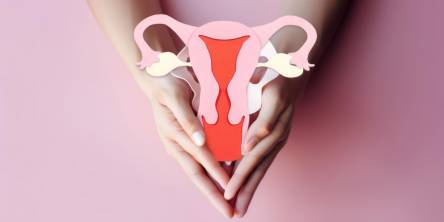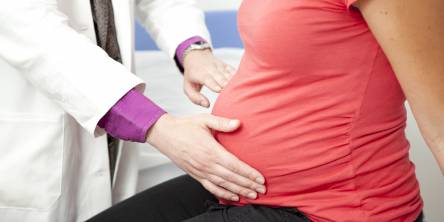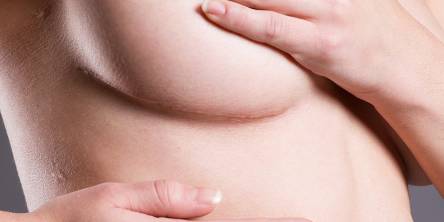Asherman’s Syndrome - Symptoms, Diagnosis, Prevention & Treatment

Asherman‘s syndrome is a rare condition, where scar tissue forms in the uterine cavity. This condition usually occurs in women who have had uterine surgery. There are also severe pelvic infections that may lead to Asherman’s syndrome, even if not related to surgery. Infections with tuberculosis or schistosomiasis may also lead to intrauterine adhesions, although in rare cases.
Procedures that can lead to the condition (surgical):
- D&C (dilation and curettage) miscarriage, incomplete or missed
- D&C for retained placenta
- Suction method D&C
- Hysteroscopy myomectomy
- Cesarean section
- Uterine artery embolization
- Vacuum procedure performed for abortion
- IUD (intrauterine device birth control)
Non-surgical risk factor procedures:
- Uterine packing with gauze to prevent postpartum hemorrhage
- Douching with a caustic chemical to induce abortion
- Endometrial tuberculosis
- Pelvic irradiation for cancer treatment
Infections with tuberculosis or schistosomiasis may also lead to intrauterine adhesions, although in rare cases.
Symptoms of Asherman’s syndrome
Some of the symptoms of the adhesions include lack of menstrual periods, miscarriages, and infertility. These symptoms can occur due to different kinds of conditions but indicate Asherman’s syndrome when they occur suddenly after a uterine surgery.
Women who have Asherman’s syndrome may notice menstrual periods being lighter than usual or having no periods at all. At the same time, there are women who have the condition and still have normal periods. Women may experience severe pain at the time of the menstrual period. This pain can be an indicator of adhesions near the cervix obstructing the normal menstrual flow.
Diagnosis
Different tests may be used to diagnose Asherman’s syndrome, such as hysteroscopy, hysterosonogram, transvaginal ultrasound examination or blood tests to diagnose tuberculosis or schistosomiasis. A pelvic exam usually doesn’t reveal Asherman’s syndrome.
Prevention
The best solution, in ideal cases, is to prevent the condition from occurring, at all. There are ways of preventing adhesions and scar tissue. In the case that you need to undergo a miscarriage, consider a natural one rather than a D&C miscarriage. Most women’s bodies are capable of miscarrying the natural way. D&C is a risk factor that may lead to Asherman’s syndrome and should therefore only be performed when necessary. There is a drug called Misoprostol, which is used for missed or incomplete miscarriage, or retained placenta after childbirth, and is believed to lower the risk of Asherman’s syndrome from forming.
There are systemic enzymes that help the body to break-down and prevent scar tissue formation. If you need to undergo a D&C procedure, think about having a systemic enzyme blend on hand for post-procedure healing. Using this therapy after bleeding has stopped, may help to prevent scar tissue from forming and may help prevent Asherman’s syndrome.
How therapy with systemic enzymes works:
- With the own immune defense system of the body to moderate inflammatory response.
- By supporting the cleansing of the tissues and improving circulation.
- By breaking down and removing a protein called fibrin that leads to prolonged inflammation and scar tissue/adhesion formation.
- By breaking down the proteins that cause inflammation in the blood, leading to their removal via the lymphatic and circulatory system.
- They reduce the inflammation, enhance proper blood formation, increases proper circulation while reducing pain.
It is recommended to start with the enzyme therapy right after a D&C procedure and is most effective when used for a period of two months. The therapy is suggested to be more effective if started with right after the procedure. It is recommended to take these blends on an empty stomach 45 minutes to 1 hour, prior to eating, or 1-2 hours after consuming a meal. Drinking a lot of water is necessary and it is best to take smaller dosages throughout the day rather than just one. The enzyme blends should not be used when experiencing heavy bleeding or two weeks prior to any kind of surgery.
There are some natural remedies that are believed to help reduce adhesions, such as the herb Shatavari (Asparagus racemosus). It seems to increase the phagocytic activity of the macrophages, which reduces the adhesions in the abdomen specifically.
Treatment options
Treatment of Asherman’s syndrome is done via hysteroscopy, in some cases assisted by laparoscopy. Adhesions usually have the tendency to reform, especially if these are severe cases of the condition. Just as there are methods to prevent the syndrome from occurring, there are methods to prevent re-scarring after surgery for Asherman´s Syndrome. Doctors recommend using estrogen supplementation, as they help to stimulate the healing process.
Others recommend a weekly hysteroscopy after the surgery to cut away any newly formed adhesions. Until now, there is no study that confirms which method of treatment is most likely to have a successful outcome. A successful outcome of treatment would be one where the uterus/cervix remains scar-free and fertility is restored.
Fertility consequences
The Asherman’s Syndrome can have a negative influence in the reproductive system, causing placenta accreta, infertility, recurrent miscarriage, intrauterine growth restriction, and others. The lack of menstrual periods is another concern. In some cases it occurs due to hormonal abnormalities, but in most cases it is caused by either complete destruction of the uterine lining or by obstruction of the cervix or lower portion of the uterus; therefore, menses are either retained in the uterus (leading to pelvic pain) or flow into the abdominal cavity leading to endometriosis.
Another condition that may occur due to Asherman’s Syndrome is uterine cancer, either before or after menopause. This is one of the reasons why a pelvic ultrasound should be conducted annually.
Similar Articles
If you have hip discomfort during perimenopause or beyond menopause, there may be a relationship. Reduced estrogen levels might raise your chance of getting gluteal tendinopathy. They may also contribute to osteoarthritis, which can damage several joints, including the hips.
Of the estimated total population having osteoporosis and osteoarthritis, 80% are women. One in two women over the age of 50 get serious fractures because of onset or severe osteoporosis. A bone injury at that age means serious length of recovery and difficulty in returning to normal mobility.
Breast lift surgery lifts the breasts, strengthens the tissue, and eliminates extra skin to boost elevation and better nipple positioning.
An enlarged vagina can occur as a result of unrelated events, such as the end of pregnancy or after sex. It can also be caused by vaginal irritation from wearing synthetic fabric underwear or a sexually transmitted disease such as genital herpes.
Uterine fibroids are one of the most common gynecological diseases that affect many women during their reproductive years. In this article, we will look at all aspects of this condition, including its causes, symptoms, diagnosis, treatment, and possible complications.
Polycystic ovarian disease (PCOD) is a hormonal disorder prevalent among women of reproductive age. It occurs when a woman's ovaries or adrenal glands produce higher-than-normal levels of male hormones, called androgens. This hormonal imbalance disrupts the menstrual cycle and leads to the formation of small cysts on the ovaries
Uterine fibroids are benign tumors that develop in the uterine muscle tissue. According to the US Office on Women's Health (OWH), fibroids can grow as a single tumor or as a cluster in the uterus, and they can be as small as an apple seed or as large as a grapefruit.
Your pregnancy test came back positive, and nothing, not even early pregnancy symptoms like morning sickness or exhaustion, can dampen your spirits. However, it is natural to worry about what to do when you discover you are pregnant.
A breast lift, like any other operation, involves skin incisions. Scarring occurs when your skin generates new tissues and mends the wound after an incision. There are, however, measures to reduce scarring before, during, and after a breast lift.









